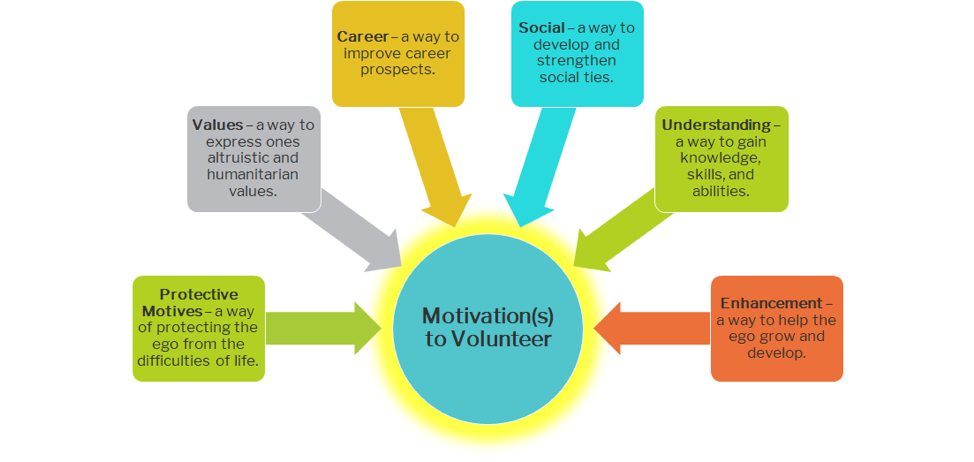
How to Craft Volunteer Newsletters People Actually Want to Read
Pro Roundup for Volunteer Coordinators
Communicating with volunteers can be a challenge, especially when volunteer coordinators are tasked with writing engaging newsletters, without formal training in content marketing.
A lot goes into writing a newsletter volunteers can’t wait to read: determining the best layout, crafting subject lines that increase opens, producing detailed editorial calendars, managing the process efficiently, etc.
Read on for our curated list of resources that will provide you with tips and tools to manage volunteer newsletters, from draft to ready to send.
Layout, Design & Frequency
First Impressions Matter– Convince & Convert
Make sure the layout and design of your newsletter is visually appealing, on brand with your organization’s standards, easy to follow, and not too cluttered. Vertical layouts are best and limit your content to four or five sections. If you cover a lot in your newsletters, create a table of contents so that readers can easily jump to the content they are looking for.
Free Email Templates– Mailchimp
Mailchimp offers free and paid plans, but with the ability to add 2,000 subscribers to a free plan, most volunteer programs can utilize Mailchimp’s easy to customize templates to create volunteer newsletters at little to no cost.
Don’t Ignore Mobile– eMailMonday
Statistics compiled by eMailMonday shows that 71.2% of people will immediately delete an email if it doesn’t display correctly. Make sure you view your email on a mobile email app before hitting send!
Be Consistent– Omnisend
Google “how often should I send an email newsletter” and you will receive many, conflicting answers. However, data shows that by sending at least 1 email per month, and no more than 4, your readers are more likely to open, read, and click through your content. Determine what works best for your audience and stick to the schedule!
Content & Copywriting Tips
Speak to Your Volunteers– Clary, E. Genet al.,
There are 6 motivations that drive people to volunteer: values, social, protective motives, understanding, career, and enhancement. When you can easily answer why people are driven to volunteer at your organization, you can create content that speaks to those motivations.

Here are some tips on stories that will speak to each motivation:
- Values — volunteer spotlight
- Social — add shout outs from leadership team
- Protective Motives — include a self-care tip
- Understanding — add quick, video training tips
- Career — celebrate volunteer professional successes, new jobs, promotions, etc.
- Enhancement —include a guest columnist and encourage volunteers to write stories
For a deeper dive into specific types of newsletters, check out this guide to Donor Newsletters from CharityHowTo.
Storytelling for Nonprofits– Classy.org
Not everyone has the innate writing skills needed to create engaging stories that drive personal connections with your volunteers. However, if you harness the power of science you, can craft email newsletter stories that drive action from the people who make change happen at your organization.
Keep in mind readers have a short attention span, so trim the content of your stories and keep your newsletter to no more than 500 words. Need to say more? Create a reader’s digest for your newsletter and include “learn more” buttons to take readers to the full article on your organization’s website.
Images Are Worth 1,000 Words– MailerLite
Use the right images in your newsletter and you can motivate your volunteers to feel and/or do something for your organization. Images can be used to share news, show impact, showcase volunteers, and more.
Searching for the best free, stock photography, that doesn’t scream stock photo? Search Pixabay and Unsplash for professional images and intersperse them with photos of your volunteers in action.
Increase Open Rates with the Best Subject Lines– CoSchedule
A lot goes into writing the best subject line, and it’s easy to go down a rabbit hole, researching what the best and brightest suggest. Follow CoSchedule’s recommendations, though, and you will have a click-worthy subject line that entices your volunteers to open and read what you have to say.

A good subject line has the following attributes:
- includes at least one word proven to increase opens
- has zero spam words
- is in title case
- includes a number
- includes an emoji
- clocks in at 3-5 words and 20 characters.
Production Schedule
When to send– CoSchedule
With 7 days in a week, there are 7 opportunities to reach your audience when they are online. Tuesday and Thursday tend to perform best; however, this varies based on industry.
Same with time of day. Some people start their day checking email, so an early morning newsletter might reach more eyes. On the other end of the spectrum, some people like to check their email before going to bed, so sending an email between 8 pm – 10 pm might work best.
So, how do you determine what works for your audience? Test a variety of days and times, determine which one performs the best, and schedule all subsequent emails for that time.
Develop an Easy to Follow Editorial Calendar– Content Marketing Institute
One tool you absolutely need in order to create and send engaging volunteer newsletters is an editorial calendar. Having a framework in place will guide you through the process for each email you send, from start to finish. Your editorial calendar can be as simple as an excel spreadsheet or as complex as an interactive display on a project management software.
No matter what it looks like, your calendar should include, at the very least, a send date, author(s) of articles, headlines, subject line, status, call to action, and notes. In addition, the editorial calendar is a great place to keep track of content ideas for future emails.
No matter how you use them, an editorial calendar is necessary to keep you organized and consistent in sending great newsletters.
Making It on Your Own
So, there you have it, a few, simple tips to follow as you venture into the land of content marketing. While you may not have a degree or years of experience in marketing, if you read the resources listed above, heed their advice, and implement an easy to replicate a framework, you will be well on your way to crafting volunteer newsletters that everyone will want to read.






